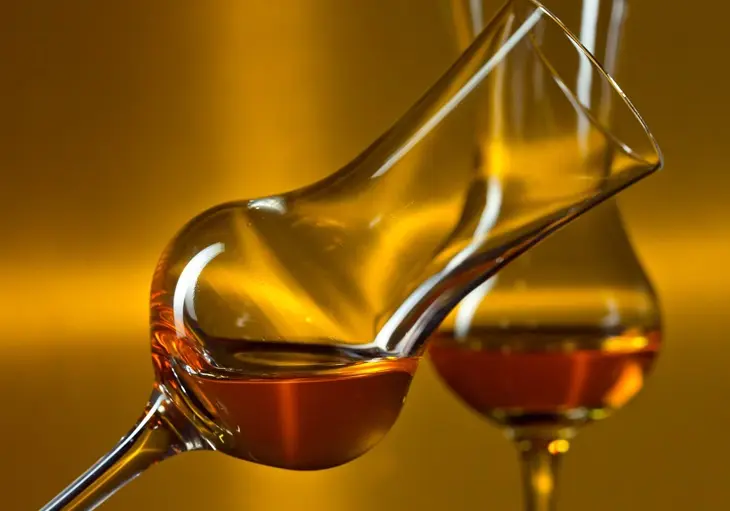Grappa is a traditional Italian spirit that has gained worldwide popularity. This article will explore what Grappa is, how it is made, and whether it qualifies as a liqueur. We’ll also delve into its history, varieties, and how it is enjoyed.
Definition and Characteristics of Grappa
Grappa is a pomace brandy, which means it is made from the leftover skins, seeds, and stems of grapes after winemaking. This makes Grappa a distilled spirit, not a liqueur. Liqueurs are typically sweetened and flavored spirits, whereas Grappa is usually dry and unflavored.
History of Grappa
Grappa has a long and storied history dating back to the Middle Ages. It was first produced in the northern regions of Italy, such as Piedmont and Veneto. Initially, Grappa was a way for winemakers to utilize the by-products of winemaking. Over time, it evolved into a refined and cherished spirit.
Production Process
The production of Grappa involves several steps. First, the pomace, or grape residue, is collected after the grapes have been pressed for wine. This pomace is then fermented and distilled. The distillation process involves heating the pomace to separate the alcohol from the solid materials. The resulting liquid is then aged in barrels or bottled immediately, depending on the desired style of Grappa.
Types of Grappa
There are various types of Grappa, each with its unique characteristics. The main types include:
Young Grappa: This Grappa is unaged or aged for a short period. It has a clear color and a robust, raw flavor.
Aged Grappa: Aged Grappa, or Grappa Riserva, is aged in wooden barrels for a minimum of 12 months. This aging process gives it a smoother, more complex flavor and a golden hue.
Aromatic Grappa: This type of Grappa is made from aromatic grape varieties, such as Moscato or Gewürztraminer. It retains the floral and fruity notes of the grapes, making it more fragrant.
Flavored Grappa: Some Grappa is infused with additional flavors, such as herbs, fruits, or spices. These are less common but offer a unique tasting experience.
Is Grappa a Liqueur?
To determine if Grappa is a liqueur, we need to understand the definition of a liqueur. Liqueurs are sweetened spirits with added flavors, often derived from fruits, herbs, or spices. Grappa, on the other hand, is a distilled spirit made from grape pomace and is typically not sweetened or flavored. Therefore, Grappa does not fit the definition of a liqueur.
Enjoying Grappa
Grappa is traditionally enjoyed as a digestif, meaning it is consumed after a meal to aid digestion. It is often served in small glasses, either neat or slightly chilled. In Italy, it is common to add a splash of Grappa to espresso, creating a drink known as “Caffè Corretto.”
Pairing Grappa with Food
Grappa can be paired with a variety of foods. Young Grappa pairs well with strong cheeses and cured meats. Aged Grappa complements desserts like dark chocolate and pastries. Aromatic Grappa is excellent with fresh fruit or light appetizers.
Grappa in Cocktails
While Grappa is most commonly enjoyed neat, it can also be used in cocktails. Here are a few popular Grappa-based cocktails:
Grappa Sour: A twist on the classic Whiskey Sour, made with Grappa, lemon juice, and simple syrup.
Grappa Martini: A sophisticated cocktail made with Grappa, dry vermouth, and a lemon twist.
Grappa Negroni: A variation of the traditional Negroni, using Grappa instead of gin.
See Also: What Is Kahlua Liqueur?
Health Benefits and Considerations
Like all alcoholic beverages, Grappa should be enjoyed in moderation. It has been said to aid digestion, which is why it is traditionally consumed after meals. However, excessive consumption can lead to negative health effects.
The Cultural Significance of Grappa
Grappa holds a special place in Italian culture. It is more than just a drink; it represents tradition, heritage, and the ingenuity of winemakers. In Italy, Grappa is often made by small, family-owned distilleries that pass down recipes and techniques through generations.
How to Choose a Good Grappa
When selecting Grappa, consider the following factors:
Origin: Grappa from recognized regions like Piedmont, Veneto, and Trentino is often of high quality.
Type: Decide whether you prefer young, aged, aromatic, or flavored Grappa.
Producer: Look for reputable producers with a history of quality production.
Price: While price can be an indicator of quality, there are excellent Grappas available at various price points.
Storing and Serving Grappa
Grappa should be stored in a cool, dark place, away from direct sunlight. Once opened, it can be kept for an extended period without significant loss of quality. Serve Grappa in small, tulip-shaped glasses to concentrate its aromas.
Conclusion
Grappa is a unique and versatile spirit with a rich history and cultural significance. It is not a liqueur, as it lacks the sweetness and added flavors characteristic of liqueurs. Instead, Grappa is a distilled spirit made from grape pomace, celebrated for its robust and varied flavors. Whether enjoyed neat, in a cocktail, or paired with food, Grappa offers a distinctive and enjoyable drinking experience. By understanding its production, types, and cultural context, one can fully appreciate what Grappa has to offer.


